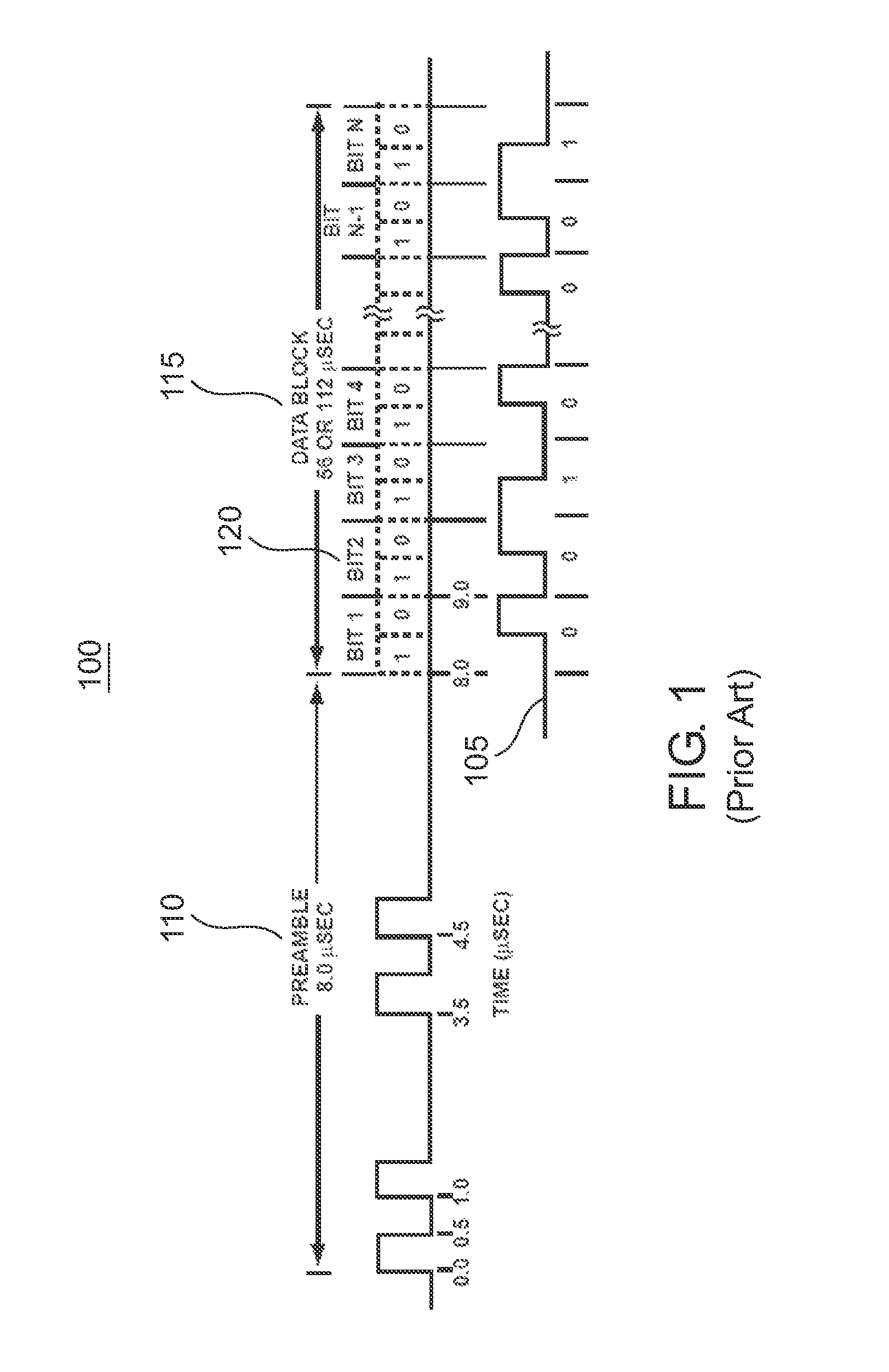Secondary communication signal method and apparatus
a signal and second communication technology, applied in the field of communication, can solve the problems of limiting the benefits obtainable by using this ppm remodulation technique, the mode s spectrum and pulse shape requirements, and the cost of simply replacing them is exorbitant, so as to increase the data rate, range or interference immunity
- Summary
- Abstract
- Description
- Claims
- Application Information
AI Technical Summary
Benefits of technology
Problems solved by technology
Method used
Image
Examples
Embodiment Construction
[0033]Mode S transponder PPM replies on 1090 MHz are defined in RTCA / DO-181C specification “Minimum Operational Performance Standards for Air Traffic Control Radar Beacon System / Mode Select (ATCRBS / Mode S) Airborne Equipment” which is incorporated by reference herein in its entirety.
[0034]A Mode S reply waveform 100 corresponding to bit sequence (0010 . . . 001) 105 from this specification is illustrated in FIG. 1. This waveform consists of a preamble 110 followed by data block 115 which consists of either 56 or 112 PPM data bit intervals 120. A constellation diagram 150 is illustrated in FIG. 2 for this modulation signal. Constellation point 155 at zero amplitude and phase indicates no pulse is transmitted while constellation point 160 indicates an amplitude modulated pulse at zero phase is transmitted during preamble period 110 or data block period 115.
[0035]A block diagram of a prior art enhancement technique using overlay modulation, which was described in U.S. Pat. No. 8,031,10...
PUM
 Login to View More
Login to View More Abstract
Description
Claims
Application Information
 Login to View More
Login to View More - R&D
- Intellectual Property
- Life Sciences
- Materials
- Tech Scout
- Unparalleled Data Quality
- Higher Quality Content
- 60% Fewer Hallucinations
Browse by: Latest US Patents, China's latest patents, Technical Efficacy Thesaurus, Application Domain, Technology Topic, Popular Technical Reports.
© 2025 PatSnap. All rights reserved.Legal|Privacy policy|Modern Slavery Act Transparency Statement|Sitemap|About US| Contact US: help@patsnap.com



